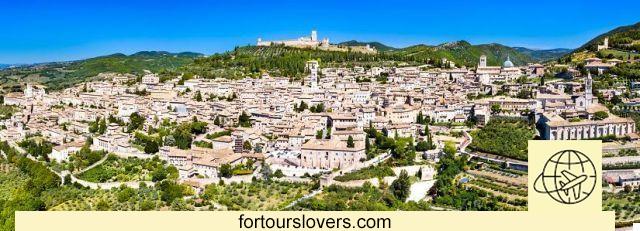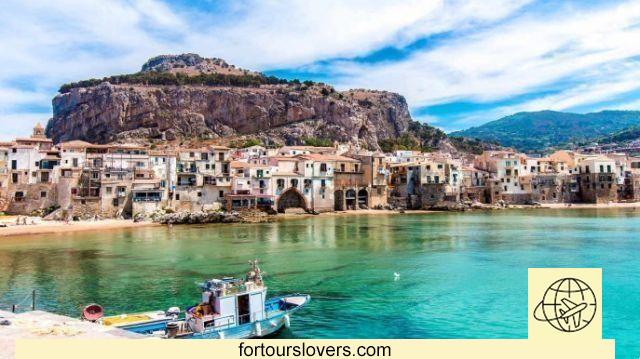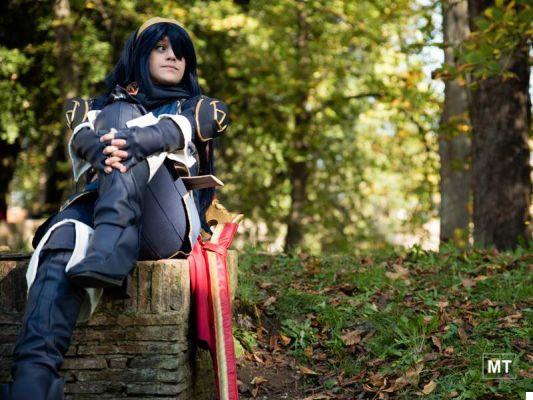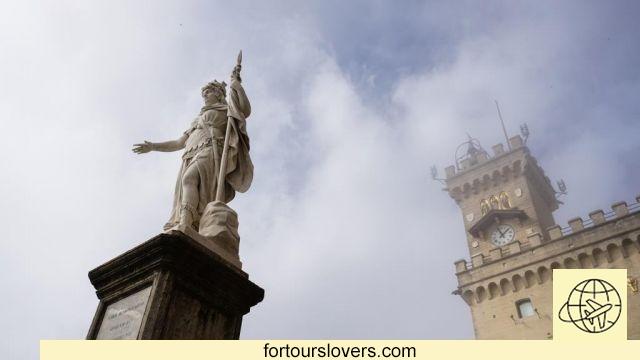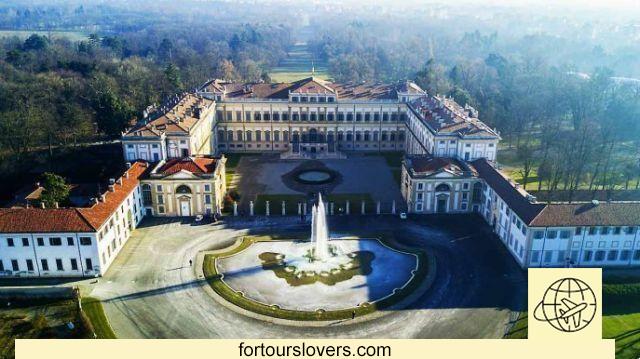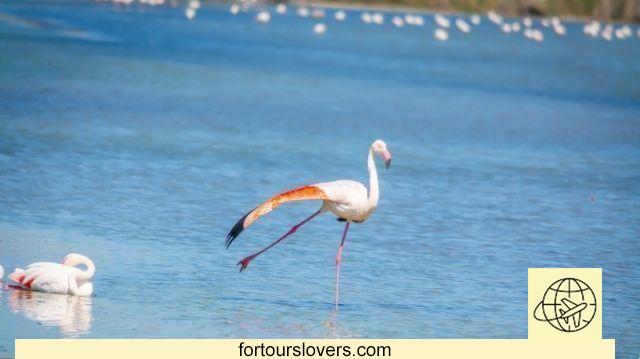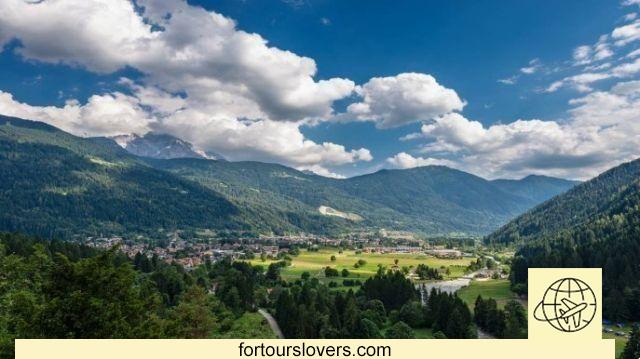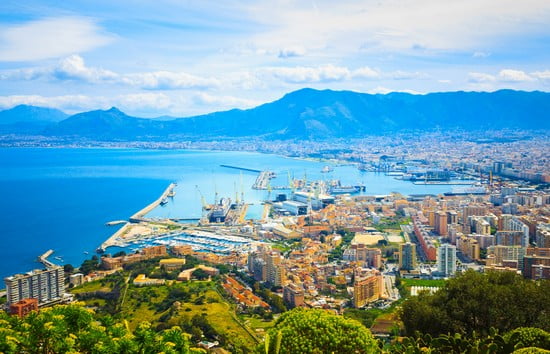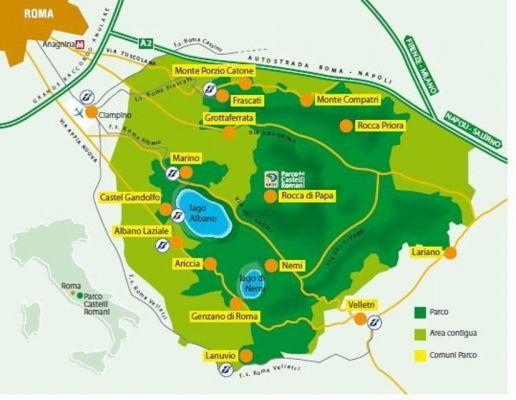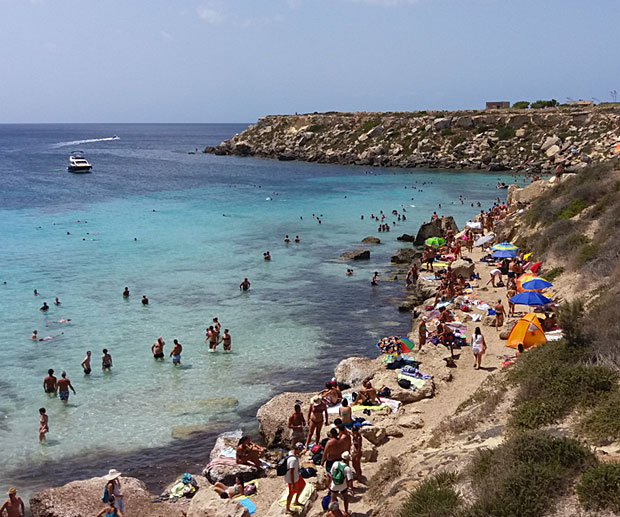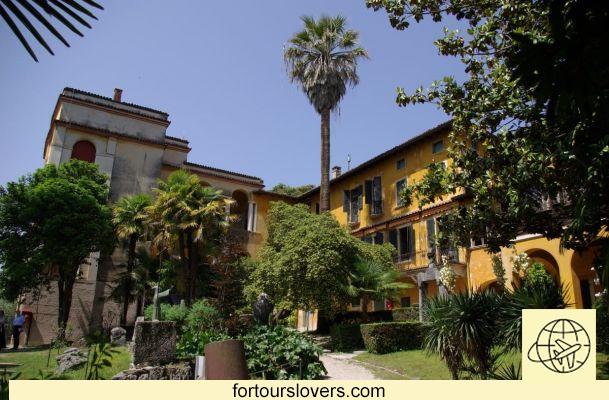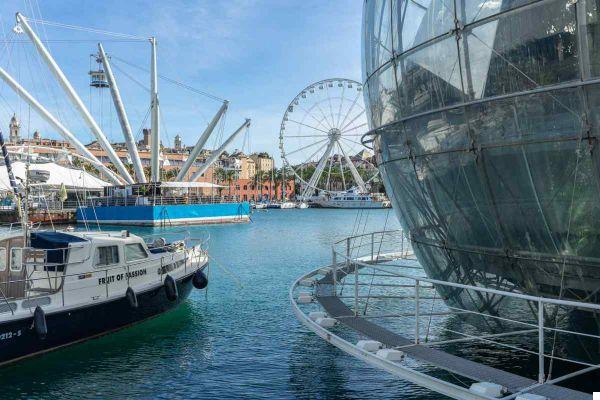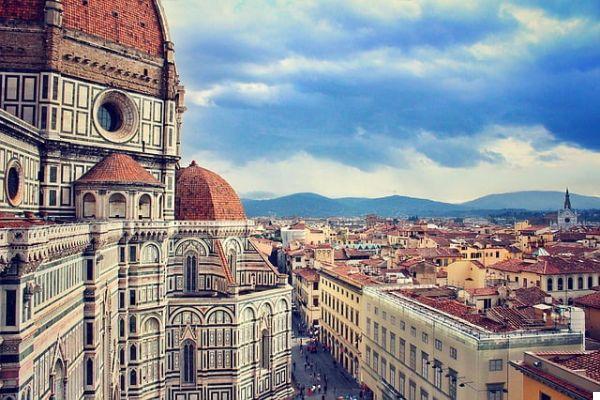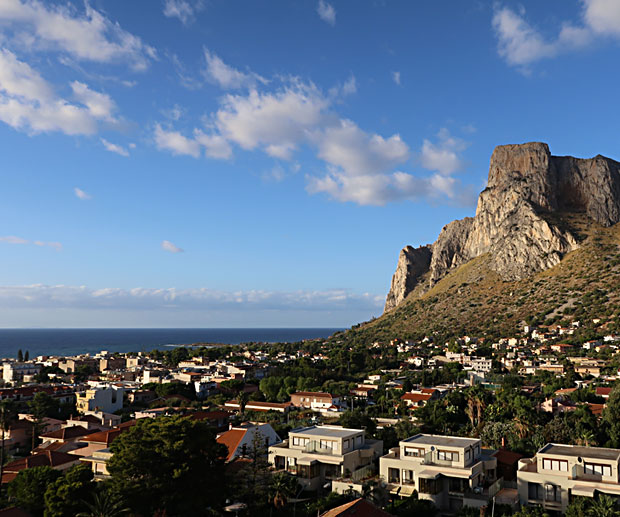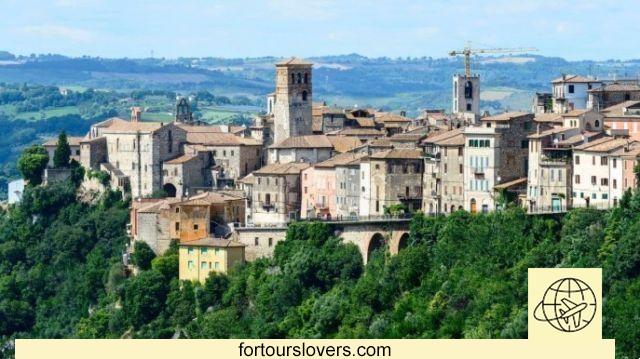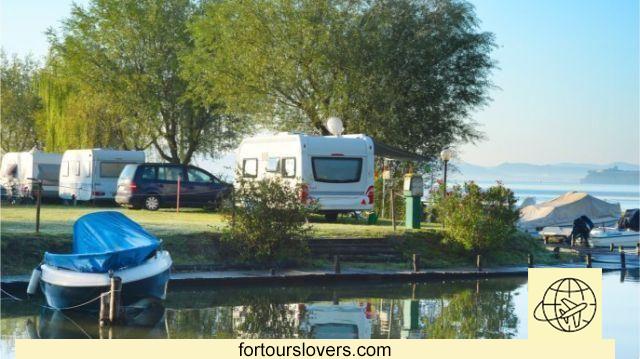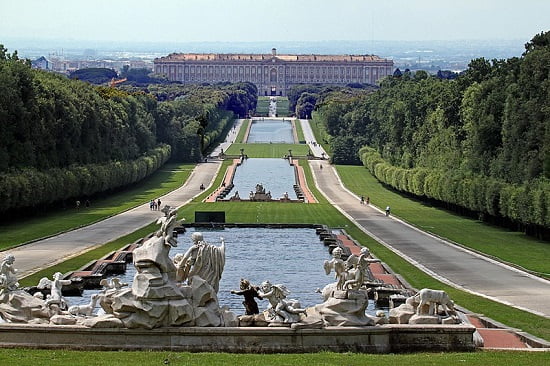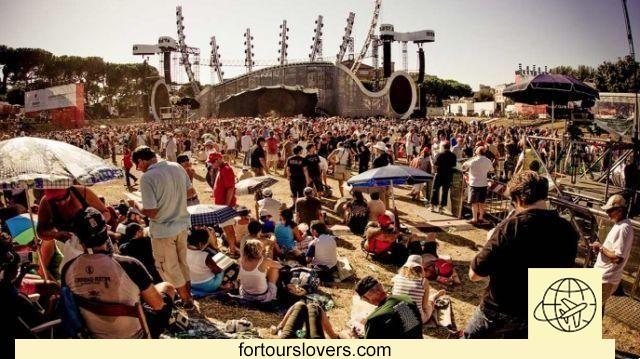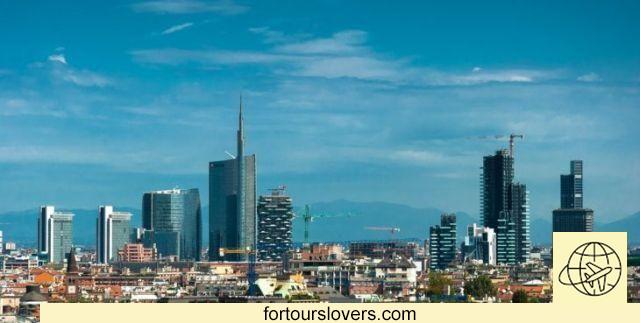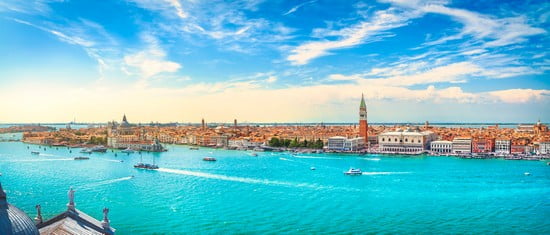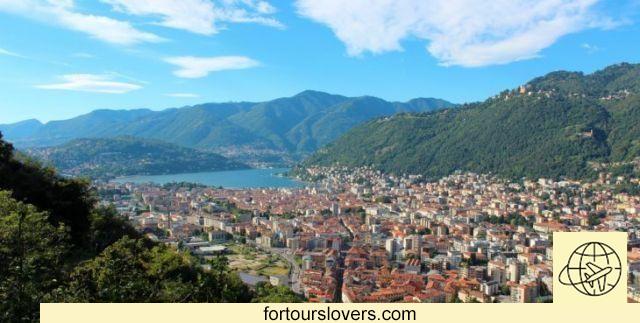
Lake Como
11 things to do and see on Lake Como and 1 not to doGardens and woods; inlets and valleys; blue of the lake and green of the vegetation; prestigious villas and medieval villages: Lake Como is one of the wonders of northern Italy. What's more: it is one of the wonders of the world, a destination, for many years now, of international tourism with dizzying numbers. Over time, many celebrities from the entertainment world have bought a home, or usually come on vacation, especially actors (among others, George Clooney) and sportsmen. Below we see together the main attractions of the area starting, obviously, with those of the homonymous capital. Happy reading.
1 The Cathedral of Como
Whether you come from the lake or by land, the first thing that catches your eye when you set foot in Como is the Cathedral of Santa Maria Assunta. The building dominates the sky line and testifies not only to the centrality of religion in the everyday life of the Larians, but also to the strategic importance of the city, for centuries a crossroads of traffic between northern Italy, central and northern Europe. Exchanges not only commercial but also cultural as evidenced by the mixture of styles that distinguishes the architecture of the church. A unique fusion of Gothic, Renaissance and Baroque which allows us to historically reconstruct the various phases of construction of the building, which lasted from the end of the 300th century to almost the mid-700th century. So 4 centuries, during which architects, master stonecutters and an infinity of other workers followed one another until the completion of the dome, which took place, as stated above, in 1744 (based on a project by the well-known architect Filippo Juvarra). Of note, the statues of brothers Tommaso, Giacomo and Donato Rodari from nearby Switzerland, to be precise from the city of Maroggia in the Canton of Ticino. They, almost all the sculptures that decorate the sides and portals of the church (special mention for the statues of Pliny the Elder and Pliny the Younger). Inside, however, we point out the paintings by Bernardino Luini and Gaudenzio Ferrari, painters of the Lombard school very active in the sixteenth century. For more information on history, art, opening hours and ways of visiting, consult the place: Cattedrale.diocesidicomo.it.
2 Broletto Palace
Right next to the Duomo stands another building of great historical and cultural interest. We are talking about the Broletto, altrimenti I notice eat Palazzo della Ragione. Built in 1215 at the behest of the then podestà Bernardo da Codazo, this palace, for centuries, was the seat of the civil power of Como. City assemblies were held there, including those of the Merchants' Society, and above all justice was administered. The adjacent bell tower was used to convoke the different gatherings, while the proximity to the Cathedral symbolized the contiguity between civil and religious power. With the first, however, losing compared to the second. In fact, when in 1396 the construction of the “new” Cathedral was ordered, it was the Broletto that was made smaller, but continued to exercise its civic function until 1764. From an architectural point of view, however, the most striking is the tricolor facade (white, gray and red) in Lombard marble.. A detail of great charm that rightly captivates tourists who visit the city. Today, after being used as a theater for a period, the Broletto di Como hosts congresses, exhibitions and city ceremonies. To be seen!
3 Former Casa del Fascio
Le Case del Fascio (or Case Littorie, Case del Littorio) were the headquarters of the National Fascist Party (PNF). In the 30s of the last century there were more than 10.000 in all of Italy even if, it must be said, in many cases, especially in the smaller municipalities, the offices were opened simply by renting or occupying pre-existing buildings. In other cases, however, they were built ex novo according to i architectural principles of functionalism and rationalism, very popular in those years. Among these buildings there are some universally recognized as true masterpieces. One of these is the Casa del Fascio in Como, just a few hundred meters from the cathedral. Made byarchitect Giuseppe Terragni which is considered the greatest exponent of Italian rationalism, the Casa del Fascio in Como has been the headquarters of the Guardia di Finanza since 1957. A circumstance, this, which in fact prevented a different use of the property that many architects would like to transform into a museum. A “museum in itself”, according to the definition of the star architect Stefano Boeri who masterfully sees all the main precepts of Italian rationalism represented in the building in Terragni. Meanwhile, even just looking at it from the outside, the former Casa del Fascio is striking for its balance and absolute symmetry of the spaces. To be seen!
4 Basilica of Sant'Abbondio
Among the unmissable stages of a holiday on Lake Como, a place of honor undoubtedly belongs to the Church of Sant'Abbondio. The building is located just outside the center of the Larian capital and on the historical level it constitutes one of the most important testimonies of the XNUMXth century Romanesque style. A sober style, which leaves little room for friezes and decorations, except for the bas-reliefs that frame the entrance portal. Looking at the outside, there are two aspects that are most striking: the division into 5 naves of the church and the presence of 2 bell towers located in the final part of the intermediate aisles. Inside, on the other hand, what captures the visitor's attention above all is the grandeur of the central nave, divided from the remaining 4 by mighty columns. At the bottom of the main apse there is a beautiful cycle of frescoes from the '300 with the "Stories of Christ". The author, generically called "Maestro di Sant'Abbondio", is not known, while its high pictorial value is universally recognized, from which the popularity of the basilica largely derives. Basilica which, we recall, is dedicated to the patron saint of Como. Not to be missed!
5 Volta Temple
Let's start with the background. In 1899 a great celebration was held in Como in honor of Alessandro Volta, an Italian scientist and, above all, a native of the Larian capital. The celebration, conceived on the model of the Universal Exposition, brought together documents, models and an infinite number of other finds attributable to the brilliant inventor of the light bulb. Too bad that a fire, caused by a cigarette butt, destroyed a large part of the Voltiana Exposition, forcing the rescuers to try to save as much material as possible from destruction. So we come to 1928, the inaugural year of the Volta Temple in Como. A mausoleum donated to the city by the industrialist Francesco Somaini who chose the architect Federico Frigerio as its designer. The latter drew a neoclassical style temple, clearly inspired by the Pantheon in Rome, with the purpose of making it a civic museum intended to house the original models, reconstructions of scientific works and other relics of the Como scientist. All with the solemnity of the temple, an aspect that still impresses visitors positively today. Opening days, times and methods of visit at the link: http://www.visitcomo.eu/it/scopendere/musei/tempio-voltiano.
6 Villa Olmo
Just over 2 kilometers from the Volta Temple, Villa Olmo is another must for a holiday on Lake Como. Aesthetically, this eighteenth-century dwelling is in line with the style of the other villas in Como, Cernobbio, Bellagio etc. Two fundamental ingredients: the Italian garden, with attention to the smallest details; and the neoclassical taste of exteriors and interiors. The name, as you can easily guess, refers to the presence of two old elms, then felled. Over the years several prominent personalities have stayed here for shorter or longer periods. Among others, the hero of two worlds Giuseppe Garibaldi and the Visconti di Modrone family (the same as the great director Luchino Visconti). For some time now, Villa Olmo has been the site of exhibitions, events and conferences. To learn more visit the place: www.villaolmocomo.it.
7 Como-Brunate funicular
Active since 1894, the Como-Brunate funicular represents, on a historical level, the last step in the development of transport around Lake Como. A development that throughout the nineteenth century accompanied the growth in tourist turnout. First steamers and boats; then the railway; and finally, precisely, the funicular conceived from the outset in the dual function of a means of transport and tourist divertissement. An attraction initially conceived for the wealthy Milanese bourgeoisie, lover of the view of Brunate, and owner of many prestigious villas in this village at almost 800 meters above sea level. Then, over the years, the target has progressively become international and today tourists from all over the world take advantage of this sui generis means of transport. Many of these, you don't pay for the spectacular panorama of the "Balcony on the Alps", as Brunate is called, they continue further along the hiking trails that unwind from the town. For more information on the history and timetables of the Como-Brunate funicular, consult the website: www.funicolarecomo.it.
8 Cernobbio
At the beginning we recalled how much Lake Como is appreciated by international jet set. Cernobbio, from this point of view, it is one of the most exclusive destinations in Italy, and not only. The merit, of course, is the enchanting scenery in which the locality stands, at the foot of Mount Bisbino, on the western shore of the lake. '900. Two in particular: Villa Erba e Villa d'Este. Both are now used for ceremonies, banquets and congress tourism (at Villa d'Este, for example, the annual Ambrosetti Forum attended by ministers, heads of state and the best of the academic world especially as regards economic subjects). It is not over, because Cernobbio has also attracted numerous trekking enthusiasts for some time. In fact, one of the most popular hiking trails in Italy starts here: it's called "The Via dei Monti Lariani" and winds for over 100 km at a height between 600 and 1200 meters. The CAI has mapped and divided the entire route into stages which owes its fortunes also to the fact that it does not present great difficulties. In short, relatively simple (as long as you respect the normal warnings in use among trekking enthusiasts) and with countless views to take your breath away in terms of beauty. To do!
9 Comacina Island
With a taxi boat from Ossuccio, part of the municipality of Tremezzina, you can reach in a few minutes Comacina, a small islet on the western shore of Lake Como. This island is most famous for the remains of the Church of Sant'Eufemia, basilica of the eleventh century, considered one of the most representative monuments of the Como Romanesque. The remains of this church, found together with other finds, gradually emerged as a result of successive excavation campaigns which lasted for over fifty years, from the early 900s to the 60s of the last century. An infinity of material today kept for the most part in the Church of Santa Maria Maddalena in Ossuccio. But that's not all, because both Ossuccio and the island of Comacina also offer more to see. Starting with Sanctuary of the Madonna del Soccorso (Ossuccio), a UNESCO World Heritage Site since 2003, until to Houses for Artists (Comacina Island) built in 1940, in a rationalist style by the architect Pietro Lingeri. The idea was to create three different artist refuges on this tiny and uninhabited island in the middle of Lake Como, for the needs of painters, sculptors and writers in search of inspiration. For more information: www.isola-comacina.it.
10 Bellagio
The fact that Bellagio is an internationally renowned tourist destination is demonstrated by the fact that one of the most luxurious resorts in the United States is called just like this village nestled on the promontory that separates the two branches of Lake Como. Houses, streets, gardens, shops: everything in Bellagio is cared for down to the smallest detail, giving tourists an atmosphere so unique that the town is called the "Pearl of Lake Como". To see the Gardens of Villa Melzi e Villa Serbelloni, two historic houses that more than all the others contribute to the "myth" of Bellagio. Even just walking along the lakefront, however, or wandering through the narrow and cobbled alleys of the town, has its charm. Not to be missed!
11 Menaggio
About ten kilometers up from Bellagio, Menaggio is the last stop on our tour to discover the attractions of Lake Como. This country of just over 3000 inhabitants is a 'popular tourist destination and, by the way, is easily accessible by boat both from Bellagio and from Varenna (shore of Lake Lecco). Several things to see: en passant we point out two, both in the upper part of the town: Villa Mylius Vigoni e The Crocetta. The latter, in particular, is worth a visit: it is a panoramic point at 500 meters above sea level, from which you can enjoy a extraordinary overall view of Lake Como. However, the importance of La Crocetta is not just landscape. The homonymous mountain, in fact, was one of the fortifications of"North Frontier Advanced Employment", more commonly known as Cadorna Line, a defensive line active during the First World War. To be seen!
1 Do not show up at the ticket office for the boats at the last minute
Many visitors mistake the lake transport service for a boat trip. The overwhelming beauty of the places is undoubtedly deceiving, but we must be equally careful not to misunderstand the spirit of service. In other words, the “Navigazione Laghi” ticket offices are not tourist offices to turn to for advice on which places to visit first. Obviously this does not mean that the staff is exempt from providing answers, only it must be considered that the times are limited and the lines of users generally long. Therefore, the other what to avoid is to show up a few minutes before the departure time of the boat (especially in the summer months). For the rest, there are no contraindications. A holiday on Lake Como is among the things that should be done at least once in a lifetime.




